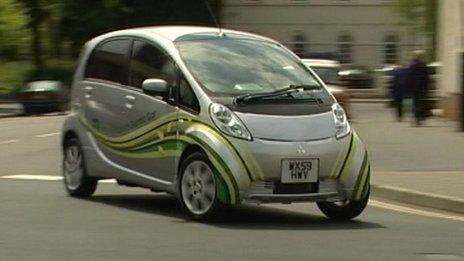Sinclair C5 built in Merthyr in 1984 'was ahead of its time'
- Published
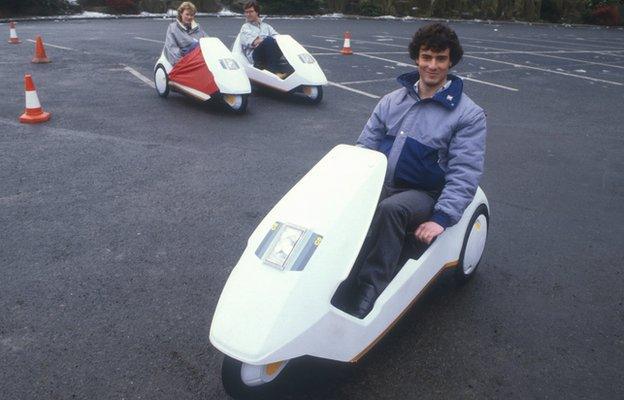
The Sinclair C5 was designed to revolutionise road transport but failed to sell in large numbers
Thirty years ago Merthyr's Hoover plant found itself the somewhat unlikely target of the paparazzi.
In a deal brokered by the Welsh Development Agency, Hoover had agreed to assemble a top-secret invention by Sir Clive Sinclair, and the long lenses mustered, desperate to glimpse the first peek of what was widely rumoured to be a revolutionary electric car.
But from the very day of its launch on 10 January 1985, the Sinclair C5 became a national joke - the press branding it a toy, and a dangerous one at that.
After producing just 12,000 units, the state-of-the-art Merthyr assembly line was mothballed within a year, with Hoover owed around £1.5m by the now-bankrupt Sinclair Vehicles company.
Vulnerability
Variously nicknamed the Doodle-buggy, Hoover Hedgehog, Skinny Mini and Voltswagen, the C5 was a three-wheel single-seat pedal-assisted electric vehicle.
Hoover's involvement led to an urban myth that it was powered by a washing machine motor, though in fact the C5 was a truly new design, incorporating many features which would become commonplace in the motor industry.
Much of the criticism it received was justified; the extremely low driving position made C5s difficult for other motorists to spot, and the fact that its top speed was restricted by law to 15mph increased its vulnerability in fast-flowing traffic.
One newspaper cartoon showed a lorry heading straight for a C5 being driven by a lemming.
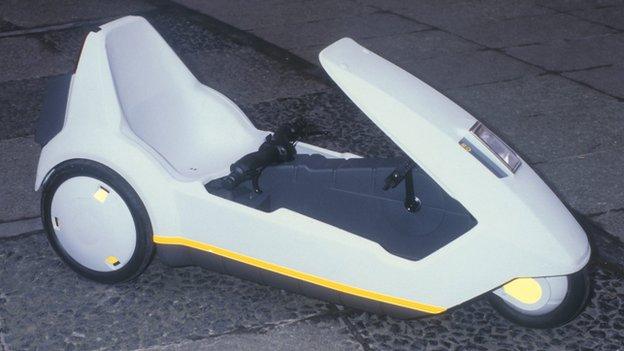
Legally restricted to 15mph, the Sinclair C5 was derided by many as a toy
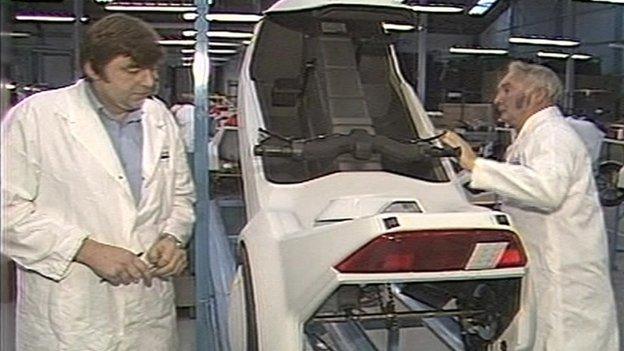
Made in Merthyr: The C5 was built at the Hoover factory
The vehicle was also completely open to the elements and exhaust fumes, and whilst weather protection was available, it came as an expensive extra.
But motoring journalist Sam Dawson - who road-tested the C5 for Classic and Sport Car Magazine in 2010 - says that much of the vitriol towards it was utterly undeserved.
"It's actually incredibly fun to drive! Lotus had a hand in its design and it shows; it handles very nimbly, and the fact that your bum is virtually on the road makes you feel as though you're going much faster than 15mph.
"You do feel vulnerable, but the safety concerns could have been addressed if it wasn't for the fact that it was already doomed as a national joke.
"I think the media hype harmed it. The press were expecting a car, whereas the C5 was just a fun way of getting around."
BBC Wales reporter Elfyn Thomas braves the city centre traffic in Cardiff in 1985 in a C5
Mr Dawson added that on their road test the C5 was able to get across Cambridge in rush hour in around half the time of the production team in a car.
Indeed it was this versatility which Sir Clive Sinclair was trying to promote when marketing the C5 as neither a bike nor a car, but an entirely new mode of transport.
Transport expert Professor Stuart Cole believes the C5 was genuinely ahead of its time.
Currently part of a team researching ways of better integrating cars, cyclists and pedestrians, Prof Cole says that if something like the C5 had been launched today, it could have provided a part of the solution.
"The dangers of the C5 weren't so much to do with its design as the roads and the attitudes of the 1980s," he said.
"In the days before unleaded petrol, your face would have been at the height of every exhaust pipe, and drivers weren't used to having to consider slower-moving cyclists.
"But with more cycle lanes, better education, and workplaces providing showers, etc, the world now is much more geared up for people looking for alternatives to the car, and hopefully will become even more so in the future."
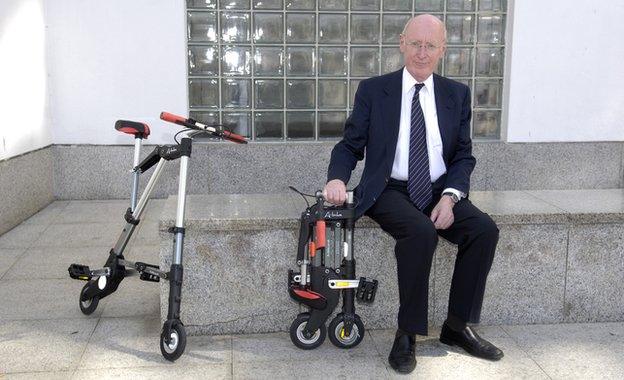
Sir Clive Sinclair has unveiled a string of new vehicles over the years, including a collapsible bike in 2006

SIR HARRY SECOMBE: Family, friends and fans speak about the man and the legend
TIME TRAVEL WITH TUDUR: The funniest of moments from the last half century of Welsh telly

Related topics
- Published11 May 2012
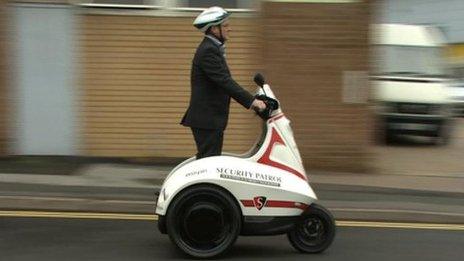
- Published1 May 2012
